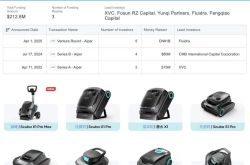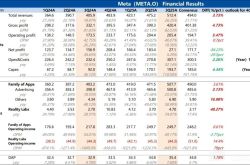Dreame Automobiles: Steering Clear of the Zotye Trap
![]() 10/30 2025
10/30 2025
![]() 512
512
Introduction
Is it already too late for Dreame Automobiles to heed this advice?
Dreame Technology, a titan in the smart home appliance sector renowned for its robotic vacuum cleaners, aspired to emulate the success of household appliance giants by venturing into the automotive manufacturing industry. However, this leap outside its comfort zone swiftly backfired, with the cross-industry endeavor embroiled in controversy from the get-go.
As details about its products surfaced, Dreame Automobiles faced allegations of mimicking luxury brands like Bugatti and Bentley in both design and core modules, sparking a public outcry over its lack of originality. Consumers began to question its innovative prowess, transforming what was anticipated to be a technological milestone into a crisis of brand credibility.
In the fiercely competitive luxury electric vehicle (EV) market, where Tesla reigns supreme with its Full Self-Driving (FSD) technology and NIO excels in user engagement, leading players already possess distinct competitive edges. Dreame's strategy—making grandiose claims followed by allegations of replication—has not only tarnished its innovative image but also raised a fundamental question within the industry.
How can the ethical boundaries of technological innovation be maintained amidst capital pressures and market competition? Can capital pragmatism and idealism driven by originality coexist harmoniously?
Where Does Originality Stand for New EV Players?
The leak of several design sketches catapulted Dreame Automobiles into the limelight, with its models bearing uncanny resemblances to luxury brands like Bugatti and Bentley in terms of proportions and details. While Dreame has yet to issue an official response, public skepticism has soared.
Chinese automotive brands are at a pivotal juncture, striving to break free from the low-end perception, with original design serving as a crucial differentiator. BYD's Dragon Face and NIO's X-Bar have already captivated consumers with their distinctive aesthetics. However, Dreame's design controversies have cast a shadow over the innovative aspirations of new EV entrants.
Some may argue that automotive design prioritizes underlying elements such as chassis architecture and aerodynamics, with exterior similarities being superficial. Yet, consumers' initial impressions are heavily influenced by aesthetics. The label of a copycat, once attached, poses significant risks to Dreame's ambitions in the luxury market, as premium brands sell not just products but also innovation and sophistication.
The designs of ultra-luxury brands like Bugatti and Bentley are the culmination of decades of technological evolution and heritage. Simple replication not only breaches ethical innovation principles but also reveals a superficial understanding of luxury branding.
Can 15 Billion Yuan in Orders Sustain Luxury Dreams?
Dreame's transition from robotic vacuum cleaners to million-yuan luxury vehicles is akin to an ant attempting to scale an elephant. While its robotic vacuums captured 42% of the German market in 2024, the capital requirements for home appliances and automotive manufacturing are vastly different. The unveiling of an SUV positioned against the Rolls-Royce Cullinan, boasting 15 billion yuan in orders, conceals the harsh reality that EV manufacturing demands hundreds of billions in upfront investment. Building a pure EV platform alone costs 20-50 billion yuan, and NIO's expenditure exceeding 100 billion yuan has yet to ensure stable profitability. With Dreame's current valuation at just 20 billion yuan, the audacity of this gamble raises eyebrows.
Dreame's funding strategy is fraught with contradictions. A 11 billion yuan industrial fund co-established with Shaoxing state-owned assets, leveraging 55% equity to attract social capital, imposes stringent requirements on future fundraising capabilities. Delays could trigger capital flight. Despite becoming the fastest EV maker to secure initial financing—just 15 days after its announcement—the undisclosed funding amount pales in comparison to the sector's massive capital needs. Compared to Xiaomi Automobile's 13 billion yuan R&D investment in a single round, Dreame's 1.05 billion yuan annual R&D budget in 2024 appears woefully inadequate. Alarmingly, Dreame is simultaneously venturing into high-capital sectors like smartphones and astronomical equipment, stretching its resources thin.
Its luxury positioning exacerbates financial risks. Upgrading its prized 200,000-RPM motor technology to automotive-grade standards demands extending its lifespan from 5-10 years to over 15 years and withstanding extreme temperatures from -40°C to 125°C, incurring billions in validation costs. A planned German factory, 20% larger than Tesla's Berlin plant, faces European labor costs and low productivity challenges. With Tesla achieving just 40% capacity utilization, the facility risks becoming a financial sinkhole. Brand elevation costs are equally daunting: NIO invested over 100 billion yuan to secure its premium position, while Dreame, lacking luxury heritage, must meet stringent social value demands in the high-end market—a formidable challenge.
As a non-listed company, Dreame's financials remain shrouded in mystery, but its robotic vacuum business profits cannot sustain the automotive R&D burn rate. The industry's gross margins hover around 30-40%, with leading firms' net profit margins typically below 10%. Even as an industry leader, Dreame's annual profits are a drop in the ocean compared to the hundreds of billions required for EV manufacturing.
Dreame's capital chain currently hinges on two precarious lifelines: converting deposits from 15 billion yuan in overseas orders (with only 3 billion yuan expected to flow back at a 20% industry standard) and founder Yu Hao's planned IPO by late 2026. However, if core businesses underperform, spin-off listings may face capital market apathy.
The collapse of HiPhi Automobiles, where a $100 million infusion failed to cover 15.7 billion yuan in debt, serves as a stark warning. Brands like Seres, Aiways, and WM Motor exited the market due to capital chain failures. Without sustained funding, Dreame risks R&D stagnation, supply chain collapse, and talent exodus, triggering a downward spiral.
Differentiation Is the Key
The new EV market is a crowded red ocean, with traditional automakers accelerating electrification and international brands like Tesla and BBA making strong inroads. To break through, Dreame must carve out a unique differentiation strategy.
The copycat controversy has dealt a severe blow to Dreame's brand image. Luxury brands symbolize quality, innovation, and sophistication in consumers' minds. Without demonstrating genuine design originality, Dreame's brand premium will erode. Urgently, it must disclose its design philosophies and prove its commitment to originality to rebuild technological credibility.
Moreover, technological prowess dominates the luxury EV market. Tesla FSD, Huawei ADS, and XPENG XNGP lead in autonomous driving, while BYD's Blade Battery and CATL's Qilin Battery dominate powertrain systems. As a latecomer, Dreame must develop proprietary technologies to secure market relevance.
Dreame's strength lies in its smart home expertise. By integrating smart home intelligent genes into vehicle cabins and creating unique car-home interconnection scenarios, it could attract consumers seeking holistic smart living experiences. However, achieving such deep technological integration is as challenging as fitting an elephant into a refrigerator, requiring long-term R&D and ecosystem development—not a quick fix.
Dreame's ambition is commendable, but the automotive industry's complexity and rigor demand authenticity. Copycat shortcuts fail, and fragile capital chains cannot withstand prolonged consumption. Only by prioritizing original technology, securing stable funding, and maintaining a clear market positioning can Dreame survive the new EV wave. After all, the automotive sector has seen countless PPT-based car manufacturing failures; what it lacks are players with market-tested resilience.








